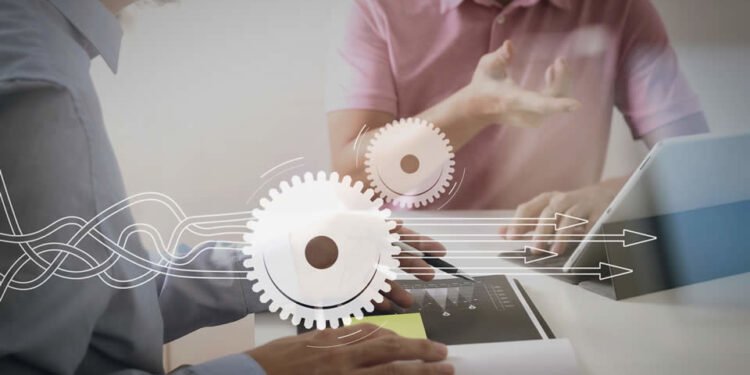Introduction to Tool Maintenance and ECNs
Tool maintenance and Engineering Change Notices (ECNs) are critical aspects of the manufacturing process. ECNs, on the other hand, handle modifications to engineering documents and processes, which help adapt to the changing landscape of manufacturing requirements. Understanding these components in today’s competitive manufacturing environment can lead to better operational efficiency and product quality while fostering an adaptive and resilient production system.
Importance of Regular Tool Maintenance
Regular tool maintenance can significantly extend the life of your equipment, reduce downtime, and save costs in the long run. Effective tool repairs ensure equipment longevity and efficiency, helping prevent costly downtime and promoting operational continuity. According to Machinery Lubrication, routine maintenance helps identify issues before they escalate, ensuring uninterrupted production schedules. Preventive maintenance strategies, such as routine inspections and calibrations, effectively keep tools in optimal working condition, thereby avoiding unplanned breakdowns. By addressing potential issues early, companies can prevent minor problems from turning into larger, more costly repair jobs. This proactive approach not only enhances the reliability of equipment but also ensures the safety of the workforce by maintaining tools in their best possible condition.
How ECNs Improve Manufacturing Processes
ECNs are essential for implementing design, materials, and manufacturing process changes. They provide a structured approach to managing changes, ensuring all stakeholders are informed and that modifications are documented and traceable. RPI News highlights how ECNs can streamline operations by offering a systematic process for change implementation. This helps maintain consistency, enhance product quality, and reduce errors arising from poorly managed changes. Proper documentation of ECNs ensures regulatory compliance and traceability, which is crucial in industries requiring strict guidelines and standards adherence. Additionally, ECNs facilitate continuous improvement by allowing companies to iterate on their designs and processes based on feedback and evolving needs.
Common Challenges in Tool Maintenance
Despite its importance, tool maintenance can present multiple challenges, such as aligning maintenance schedules with production, the complexity of the equipment, and a limited workforce. Addressing these challenges requires a proactive approach, including scheduled downtimes and investing in training for maintenance personnel. Another challenge is the balancing act of restorative maintenance activities against the need to maintain continuous production, often leading to the deferral of necessary repair work. Companies must also deal with the variability in tool usage and wear rates, which can complicate the planning and execution of maintenance tasks. Effective communication and coordination between production and maintenance teams are essential to minimize disruptions and optimize resource allocation. Leveraging data analytics can also aid in predicting maintenance needs more accurately, thereby reducing unexpected breakdowns.
Steps for Effective ECN Implementation
- Identify the need for change
- Document the proposed modification
- Review and approve the change
- Implement the change
- Monitor and evaluate the results
These steps ensure that all changes are well-documented and communicated, reducing the risk of errors and improving the overall efficiency of the manufacturing process. Approving changes involves consultation with relevant departments, ensuring that considerations such as cost, feasibility, and impact on current operations are considered. The proper implementation also includes training employees on new procedures and updating relevant documentation to reflect the changes. Continuous monitoring and evaluation after implementation are crucial to assess the effectiveness of the change and make any necessary adjustments. This iterative process helps organizations continuously improve and adapt to new challenges and opportunities.
Technological Innovations in Tool Maintenance and ECNs
Advancements in technology are continually improving the fields of tool maintenance and ECNs. Predictive maintenance powered by AI and IoT is becoming more prevalent, allowing for more accurate predictions of tool failures and timely interventions. Technologies like machine learning can analyze vast amounts of operational data to forecast potential tool breakdowns, significantly reducing unforeseen downtime. Moreover, digital ECNs facilitate faster and more efficient change management across distributed teams, leveraging cloud-based solutions to synchronize real-time information. These advancements enable organizations to be more agile and responsive to changes, enhancing their operational efficiency and competitiveness. Innovative tools such as digital twins are also being utilized to simulate and optimize maintenance processes, providing deeper insights and enabling better decision-making.
Future Trends to Watch Out For
The future of tool maintenance and ECNs is promising, with trends like intelligent manufacturing, real-time data analytics, and cloud-based ECN systems transforming the landscape. Companies that embrace these advancements will be better positioned to maintain competitive advantage and operational efficiency. Intelligent sensors and IoT devices will play a pivotal role in gathering real-time data, which can be used to refine maintenance schedules and ECN procedures dynamically. As industries move towards more automated and interconnected systems, the integration of these technologies will become increasingly essential. Other emerging trends include using augmented reality (AR) for maintenance training and troubleshooting and adopting blockchain technology to enhance the security and traceability of ECN records. By staying ahead of these trends, companies can ensure that their tool maintenance and change management practices remain cutting-edge and highly effective.
Conclusion
Understanding and implementing effective tool maintenance and ECN practices are indispensable for any manufacturing company. Embracing new technologies and continuous improvement will undoubtedly pave the way for more efficient and cost-effective manufacturing processes. Integrating advanced tools and systematic change notices will remain a cornerstone for achieving operational excellence as industries evolve. Organizations can enhance their resilience, productivity, and long-term success by fostering a culture of maintenance and responsiveness to change.


















